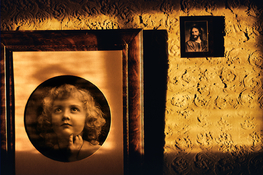So does it matter if you have never heard of the sitter? Would you be as interested in a portrait of my wife's mother's former school teacher as in a portrait of - say - Steve McCurry or Nelson Mandela or Gwyneth Paltrow? Would you buy - indeed, have you bought? - a portrait of an unidentified sitter?
When we were young and poor, my wife and I bought a photograph of a young child in a flea market. We had just taken up housekeeping in a dumpy little rental house which would could not afford to furnish, and the photo was a cheap way to make the house seem a little less bare. Over time, we were able to move into nicer houses, and buy some furniture, but for a decade or two, we kept that portrait on the wall, I'm not sure why, perhaps out of habit or nostalgia? Now, it is no longer on display, but it is probably still up in our attic.

Today, I would not hang a portrait of a famous person on my wall. But I still like to look at the work of some A-list photographers. Recently, we got to see an Annie Leibovitz exibition at Crystal Bridges Museum of American Art in Bentonville, Arkansas (now ended). Most of her portraits were of very famous people
<example>.
I enjoyed looking at them in the museum, but if someone gave me one of Annie Leibovitz's portraits of some famous film star, or artist, or politician, it would go up in my attic with the portraits of the little girl and Jesus.










 .
.
